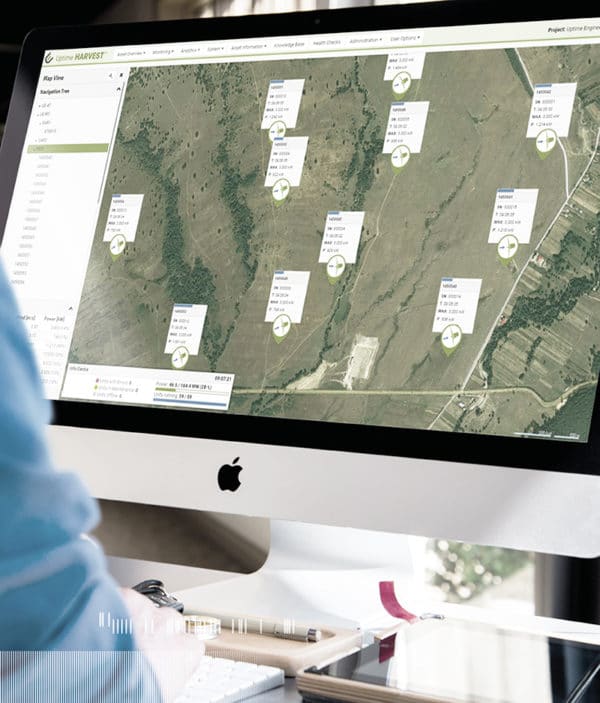Reliable fleets and plant function without problems and, above all, without unplanned downtimes. This can be achieved if all fault indicators are acquired, and their causes determined so that timely intervention can be instigated. Since the consequences of downtimes are normally associated with high costs, Uptime HARVEST is also a very interesting solution from an economic point of view.



Even the most minor of faults in an auxiliary device can result in a large plant being shut down. A single downtime in a fleet can have long-term effects in a traffic system or a logistics chain. Under such conditions, it is necessary to monitor the state of the plant or fleet in order to avoid unplanned shutdowns. The question is, which concrete measurement signals and events need to be monitored, how this data is converted to information, and how this information can be made useful for maintenance work.
First, the operator needs to know the state of the plant. The primary goal is thus to detect deviations in system behaviour. A long-term solution to the problem needs to determine the causes of the observed indicators and to calculate the remaining lifetime. Since far-reaching decisions are made based on these results, only those algorithms and models should be used that the user understands. The monitoring results must open up a series of possible actions to be taken. They must provide concrete recommendations and offer the required lead time.
How does one know what to monitor and which data is to be evaluated? The Uptime knowledge base provides the required deviation indicators, diagnostic algorithms, and lifetime models for over 500 downtime mechanisms for over 100 classes of components and modules. This enables the risk-based monitoring of concrete plants to be designed and implemented. The indicators are analytical, the models physical. They are easily understood and need only few input data. The user can easily configure them to adapt to his aggregates. This delivers rapid results and a solid support for the service team.

Uptime HARVEST ensures highest availability.
The quality of maintenance is crucial for the yield from systems since this ensures availability. Unforeseen downtimes have a particularly high impact due to their consequential costs. Uptime HARVEST ensures that the system state is permanently available. At the same time, the quality of maintenance is checked. Based on this, cost-benefit analyses support the decision for the best applicable maintenance strategy.

Uptime HARVEST makes maintenance plannable.
Maintenance processes are continually interrupted by spontaneous actions to solve acute problems. Planned maintenance is delayed resulting in even more frequent downtimes. Uptime HARVEST ensures absolute plannability: with concrete notice of endangered components and with time slots available up to problem resolution. This reduces repair effort and creates a buffer for efficient maintenance planning.

Uptime HARVEST provides a decision basis for preventative maintenance.
Uptime LOCATE evaluates which measures provide which contribution towards validation and at what cost. It can then be calculated whether the desired goals are on time, whether they can really be attained, and what costs would be the consequence of missing the target. After any changes, Uptime LOCATE determines the direct and indirect risks and hence scenarios illuminating the way back to the target path.

You are currently viewing a placeholder content from Facebook. To access the actual content, click the button below. Please note that doing so will share data with third-party providers.
More Information